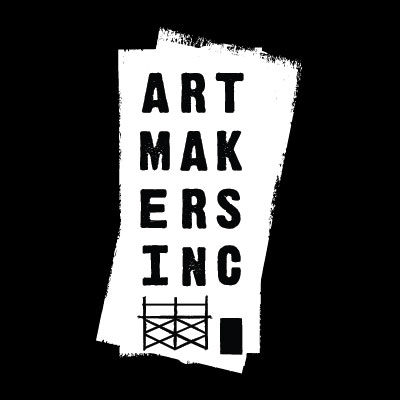16. Untitled
LUIS FRANGELLA
1985, 25’ x 17’
Photo © Camille Perrottet
Wanting to be good neighbor, Artmakers reached out to members of the 8th Street Garden and the owners of the club 8 BC, asking them to review and approve the designs for murals facing East 8th Street. The club thought the La Lucha murals too “social realist” in style and wanted the mural on its building to reflect the burgeoning East Village art scene. Thus, Luis’ mural became part of La Lucha Continua. His “expressionistic head”—an image he was known for—perfectly expresses the frustration and outrage felt by many in response to the issues addressed in the murals.
Born in Argentina, Luis earned a Masters of Architecture at the University of Buenos Aires in 1972 and, having moved to Boston, worked as a research fellow at MIT’s Center for Advanced Visual Studies. In 1976, he moved to New York City and quickly established himself as an important figure in the East Village underground art scene. Merging social life and artistic concerns, artists worked directly on the streets and in clubs—new venues that introduced novel forms of music, poetry, writing, and the visual arts. The period saw the rise of Punk, No Wave, graffiti art, and the kind of neo-expressionist painting that characterized Luis’ work.
Starting in 1980, hundreds of galleries opened in the neighborhood, from Second Avenue to Avenue B. In addition to the galleries, often artist-run, there were alternative spaces and collectives. The East Village scene reached its peak from 1982 to 1984; by 1986 it had run its course. Rising rents (and gentrification spurred by New York University’s expansion into the East Village) drove some galleries out of business. Others moved to Soho and 57th Street; it was still years before Chelsea emerged as a major gallery hub. Other contributing factors were the 1987 stock market crash, AIDS, and the deaths of Andy Warhol in 1987 and his protégé Jean-Michel Basquiat in 1988.
Luis died in 1990 from AIDS. His work is frequently shown in exhibitions about the East Village art scene, most recently in Something Possible Everywhere: Pier 34 NYC, 1983–84 and The Piers: Art and Sex Along the New York Waterfront.


